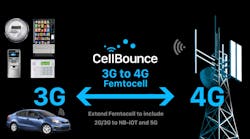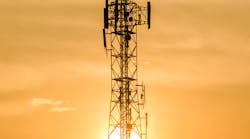Legal Brief: 9 Ways to Mitigate 3G Sunset Liability

This article originally appeared in the May 2021 issue of Security Business magazine. When sharing, don’t forget to mention Security Business magazine on LinkedIn and @SecBusinessMag on Twitter.
Technological advances are usually good things. The wheel, the printing press and even sliced bread enhanced our civilization in one way or another; however, many advances in technology can also be disruptive. Such is the case with the looming changes from 3G communications networks to faster and more efficient wireless cellular networks such as 4G and 5G.
Integrators who persevered through the previous 2G sunset know that the 3G sunset is a massive change in mobile communication networks by the major wireless carriers that will affect millions of wireless radios across the country. Integrators are again feeling the major effects as well.
The Problem for the Security Industry
While we all want faster and newer communications networks, the prospect of disconnecting millions of cellular radios presents meaningful risks to the security industry and its customers.
First, changing out millions of 3G radios is a major logistical undertaking – complicated by a pandemic. Second, because of that pandemic, customers are reluctant to allow security technicians to enter their homes or facilities; thus, the pace of the upgrades has been slowed.
Security providers and their customers face the very real risk that some radios will be disconnected from service by the major cellular carriers and, therefore, not capable of transmitting security signals in emergencies. This could cost lives.
Because of these risks, the timing of the 3G sunset is critically important. Verizon plans to sunset its 3G network as of December 2022; however, AT&T (which has the largest percentage of radios on its network) plans to sunset its 3G network much earlier – on Feb. 22, 2022. AT&T has resisted calls by security industry leaders to defer this deadline to at least December 2022.
To put the timing in context, AT&T’s sunset from 2G to 3G in 2016 was preceded by a four-plus-year transition period. The 3G sunset, on the other hand, has just a three-year transition period – more than a year of which was during a pandemic.
A Potential Solution
Rolling trucks to replace every radio is feasible, but not as feasible in a pandemic within the time frame set by AT&T. Because of this and the associated operating costs, the security industry has sought other solutions.
One possible solution is a 3G converter developed by a company called CellBounce, which was acquired by ADT in December 2020 after its proprietary 3G-to-4G radio conversion technology was certified for use on AT&T’s 4G cellular network (read more at www.securityinfowatch.com/21201842). This converter is designed to keep 3G devices connected through all future network changes and avoid the need to send a technician to change out older radios. The technology is still being tested, standards are still being developed, and compatibility issues are still being resolved.
It is unclear whether CellBounce devices are in sufficient supply or whether they will be offered to all market participants. Consequently, there may not be enough devices to account for the millions of radios in need of replacement by the 3G sunset.
How to Mitigate Your Liability
The 3G sunset is looming. Be prepared. In light of the timing and the risks, security providers must take action now to mitigate their potential liability. Here are nine ways:
1. Send a technician: The most immediate solution is to send a technician to swap out the radio; however, due to normal operational logistics, and complications posed by the pandemic, some providers will not be able to do this for every customer by the deadline.
2. Give notice: Provide customers with a clear, unambiguous notice of the pending deadlines, the risks and what you are doing to resolve the issue. This can be done on a bill, a letter, an email, on your website, or all of these.
3. Appoint a 3G sunset officer: Designate someone in your company as the 3G sunset officer, and have that person make quarterly (or monthly) reports to senior executives and board members. Document all such meetings and reports to show that you are taking this problem seriously.
4. Explore and present alternatives: Your company should be looking for alternative solutions to the problem. CellBounce may be one solution, but it may not be available to all security providers. Try to find other solutions and document your efforts to do so.
5. Be prominent with lobbying efforts: If your company is concerned about the pending 3G sunset and its risks and implications, join in the lobbying efforts to get an extension of time until the 3G sunset. Organizations like The Monitoring Association (TMA) – particularly, its Alarm Industry Communications Committee – are actively working with the carriers, Congress and other federal agencies to try to account for and protect against the risks posed by the 3G sunset.
6. Evaluate insurance: Check insurance policies to determine if you are insured for the risks presented by the 3G sunset. Address this with your insurance broker and raise this issue in connection with any policy renewals.
7. Seek indemnity and contribution: Let’s face it, if death, personal injury or property loss results from defunct cellular radios, litigation will result. Your company should be working to protect against this, but some of the responsibility may rest with others. In litigation, lawyers like me devise strategies to attribute blame to those who may bear primary responsibility for the loss. That could include other industry players and/or the carriers who are setting the 3G sunset deadlines.
8. Document everything: If litigation results, you want to be able to demonstrate that your company did everything it could to mitigate the risks of the 3G sunset to your customers. It will not go well for you in court if you can show no such efforts. Thus, preserve all documents – such as board meeting minutes, all notices sent to your customers, service records, participation in lobbying efforts, etc.
9. Hire capable counsel: Lawyers are expensive, but lawsuits are really expensive. Protect your business from the risks of the 3G sunset and hire a capable and informed attorney to navigate these issues for the company.
Timothy J. Pastore, Esq., is a Partner in the New York office of Montgomery McCracken Walker & Rhoads LLP (www.mmwr.com), where he is Vice-Chair of the Litigation Department. Before entering private practice, Mr. Pastore was an officer and Judge Advocate General (JAG) in the U.S. Air Force and a Special Assistant U.S. Attorney with the U.S. Department of Justice. Reach him at (212) 551-7707 or by e-mail at [email protected].

Timothy J. Pastore, Esq.
Timothy J. Pastore Esq., is a Partner in the New York office of Montgomery McCracken Walker & Rhoads LLP (www.mmwr.com), where he is Vice-Chair of the Litigation Department. Before entering private practice, he was an officer and Judge Advocate General (JAG) in the U.S. Air Force and Attorney with the DOJ. [email protected] • (212) 551-7707
Meet Timothy J. Pastore
Timothy J. Pastore, Esq., is the newest columnist to join the Security Business magazine family. He is a Partner in the New York office of Montgomery McCracken Walker & Rhoads LLP (www.mmwr.com), where he is Vice-Chair of the Litigation Department.
Before entering private practice, Mr. Pastore was an officer and Judge Advocate General (JAG) in the U.S. Air Force and a Special Assistant U.S. Attorney with the U.S. Department of Justice. As a JAG, in particular, Mr. Pastore was legal counsel to the Air Force Security Forces and Air Force Office of Special Investigations.
Mr. Pastore has represented some of the largest companies in the security industry, including Protection One, Comcast, Charter, Cox, Altice, Mediacom, IASG, CMS and others. He regularly provides counsel on risk management, contracting, operations, licensing, sales practices, etc. Mr. Pastore also has served as lead counsel in courts throughout the country in dozens of litigation matters involving the security industry.
Among other examples, Mr. Pastore led the successful defense at trial of cable giant Comcast in a home invasion case in Seattle, Washington. The case received significant press attention and was heralded by CVN as a top-ten defense verdict.
Mr. Pastore is a graduate of Bucknell University and Boston College Law School.
Reach him at (212) 551-7707 or by e-mail at [email protected].





